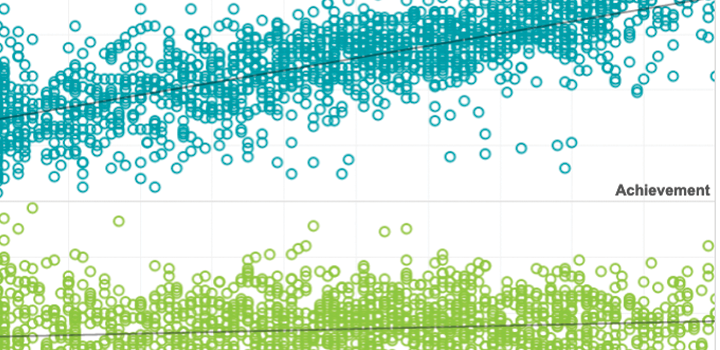

Are test and academic disengagement related? Implications for measurement and practice
In this study, we examine whether behaviors indicative of academic disengagement like chronic absenteeism and course failures are related to behaviors indicative of test disengagement like rapidly guessing on items.
By: Emily Wolk, Sharon Bi, Tran Keys
Topics: High school, School & test engagement, Social-emotional learning


This paper briefly discusses the trade-offs involved in making such a transition, and then focuses on a relatively unexplored benefit of computer-based tests – the control of construct-irrelevant factors that can threaten test score validity.
By: Steven Wise
Topics: Measurement & scaling, Innovations in reporting & assessment, School & test engagement


Seven successful strategies for literate assessment
Evidence that suggests principals’ knowledge and skills in relation to assessment leadership—such as incorporating professional development, use of assessment data in classroom planning, and nurturing professional collaboration on matters of student achievement and instruction—are of fundamental importance to building assessment literacy among their teachers.
By: Beth Tarasawa, Amelia Wenk Gotwals, Cara Jackson
Topics: Empowering educators, High-growth schools & practices


When computer-based tests are used, disengagement can be detected through occurrences of rapid-guessing behavior. This empirical study investigated the impact of a new effort monitoring feature that can detect rapid guessing, as it occurs, and notify proctors that a test taker has become disengaged.
By: Steven Wise, Megan Kuhfeld, James Soland
Topics: Measurement & scaling, Innovations in reporting & assessment, School & test engagement


Identifying disengaged survey responses: New evidence using response time metadata
In this study, we condition results from a variety of detection methods used to identify disengaged survey responses on response times. We then show how this conditional approach may be useful in identifying where to set response time thresholds for survey items, as well as in avoiding misclassification when using other detection methods.
By: James Soland, Steven Wise, Lingyun Gao


Design Challenge winner: Student assessment engagement
In this CASEL Measuring SEL blog, James Soland shares how work with Santa Ana Unified School District led to new insights on how item response times and test metadata may provide insight into student SEL.
By: James Soland
Topics: School & test engagement, Innovations in reporting & assessment, Social-emotional learning


A longitudinal study of reading growth for students with visual impairments
Using data from Northwest Evaluation Association’s Measures of Academic Progress assessment, reading achievement was analyzed from 224 students with visual impairments in grades 3–10, in four states over an eight-year time period.
By: Beth Boroson, Elizabeth Barker, Xueming (Sylvia) Li
Topics: Accessibility, Growth, Reading & language arts


